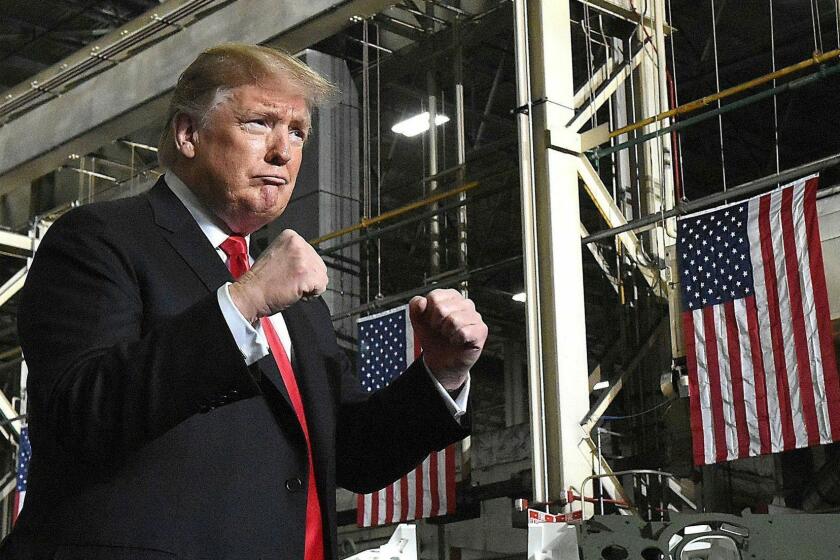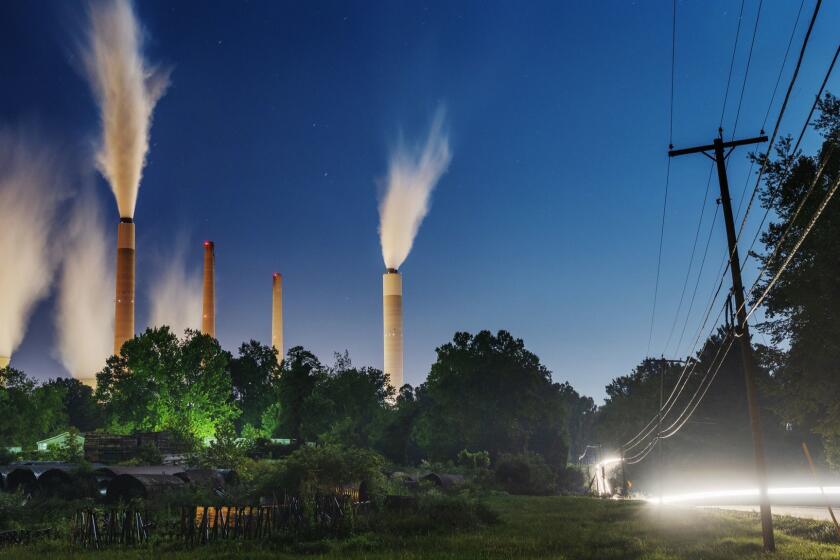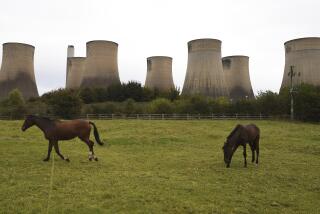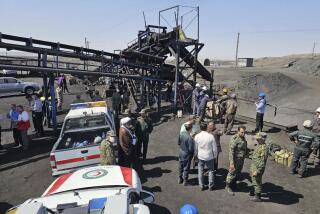Trump vowed to save coal. Now miners are getting laid off
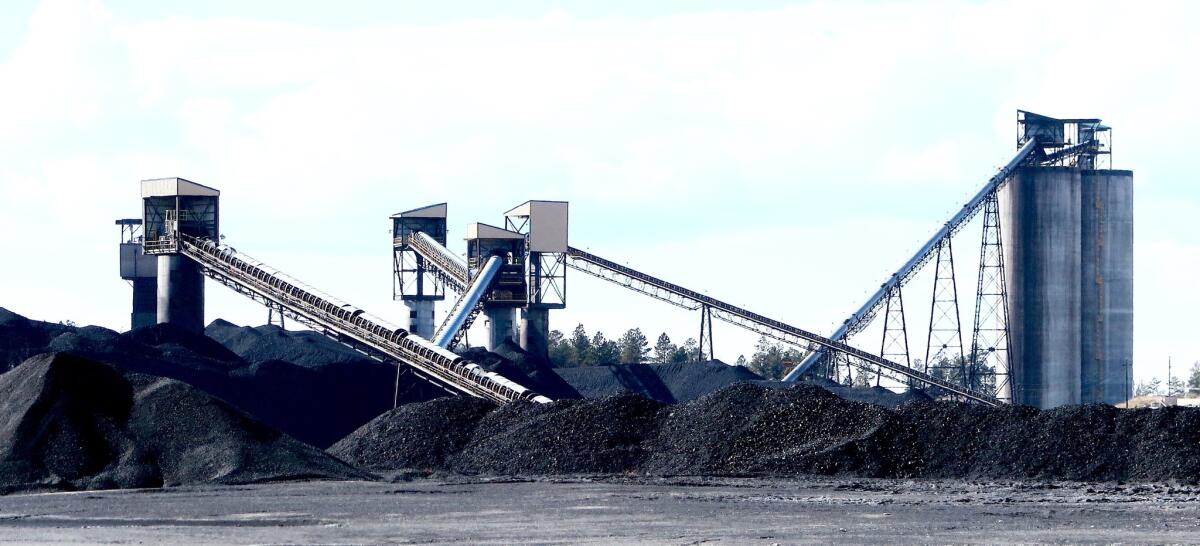
The clearest sign yet that Americaâs Coal Country is headed for widespread job cuts: The amount of coal being produced per U.S. miner is at the lowest level in eight years.
Productivity has slid 11% this year alone. The last time it was this low was in 2011, when coal companies ended up cutting almost half their workers in a downturn that lasted more than four years.
It underscores the intense pressure facing U.S. coal producers. For years, they relied on exports and metallurgical coal used for steelmaking to offset shriveling demand from U.S. utilities. Now even those markets are suffering as the global economy slows, liquefied natural gas becomes cheap and plentiful in Asia and President Trumpâs trade war churns away.
The bottom line: U.S. production is expected to slide 10% this year, and jobs are at risk.
âItâs highly likely there will be more layoffs,â said Phil Smith, a spokesman for the United Mine Workers of America union. âI donât think thereâs any question.â
After Trumpâs vow to boost industry and two years of gains, manufacturing is in recession, threatening the livelihoods of many of his supporters.
The looming downturn comes as Trump, who vowed to rescue the coal industry by easing environmental regulations, begins his reelection campaign. Winning a second term will hinge in part on mining strongholds he carried in 2016, including West Virginia and Pennsylvania.
âThe president is committed to all Americans, including our great hardworking coal miners,â White House spokesman Judd Deere said in an email.
Cutbacks are already underway. On Monday, Peabody Energy Corp. said it plans to close an Illinois mine and lay off about 225 workers. Blackhawk Mining idled four West Virginia mines last week and fired about 340 people. And in September, Murray Energy Corp. shut mines in West Virginia.
âMost coal-mining companies will have to reassess production,â said Mike Dudas, an analyst with Vertical Research Partners.
The number of U.S. coal jobs bottomed out at about 48,800 in 2016 as Arch Coal Inc., Peabody and other big miners worked their way through bankruptcy, according to the U.S. Bureau of Labor Statistics. Then, as exports picked up and Trump began his push to roll back environmental regulations, hiring followed suit. The industry added about 4,500 jobs through last month.
Now the market has turned. Lower production means U.S. coal workers will each produce an average of about 12,700 tons this year, based on an analysis of production estimates from the U.S. Energy Information Administration and employment figures from the Bureau of Labor Statistics. Thatâs the second-lowest production rate in two decades.
Chubb became the first of the big U.S. insurers to announce a ban on coverage for coal companies.
âPeople are going to have to get laid off,â said Andrew Cosgrove, a mining analyst for Bloomberg Intelligence. âTheyâre going to have to close mines.â
The moves reflect the confluence of woes pummeling the industry. Electricity producers are shunning the fuel in favor of cheaper natural gas, wind and solar. Global prices for coal shipped to power plants have plunged by more than one-third in the last year in both Europe and Asia. Prices for metallurgical coal â used in steelmaking â fell last month to the lowest since January 2017, and thereâs little sign of a recovery. Weak demand in South America and Europe, coupled with port restrictions in China, led to an oversupply of that steelmaking coal.
âThere are few positive catalysts that will lift met coal prices over the next few months,â Lucas Pipes, an analyst with B. Riley FBR, said in a research note Thursday.
More to Read
Inside the business of entertainment
The Wide Shot brings you news, analysis and insights on everything from streaming wars to production â and what it all means for the future.
You may occasionally receive promotional content from the Los Angeles Times.
